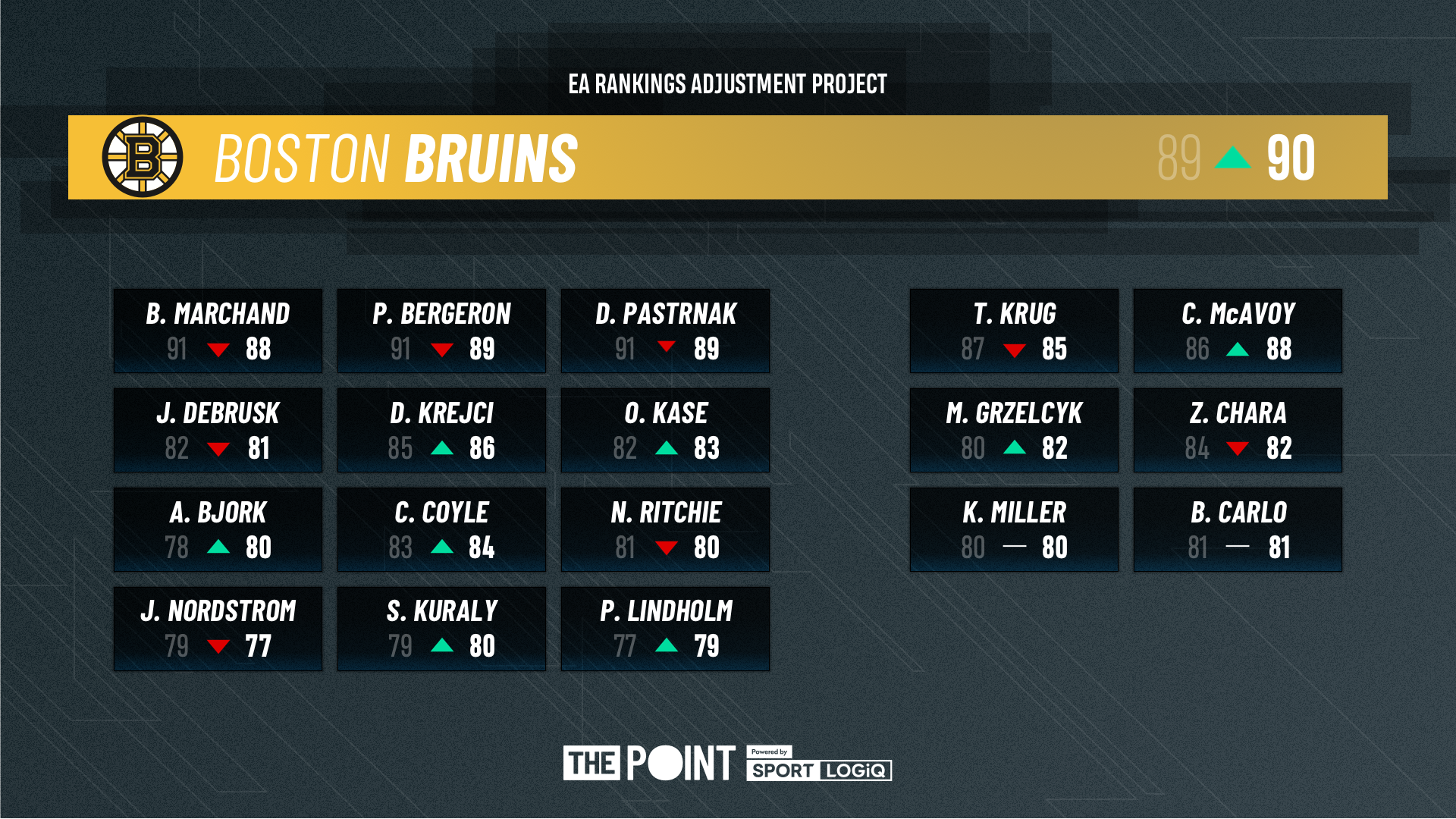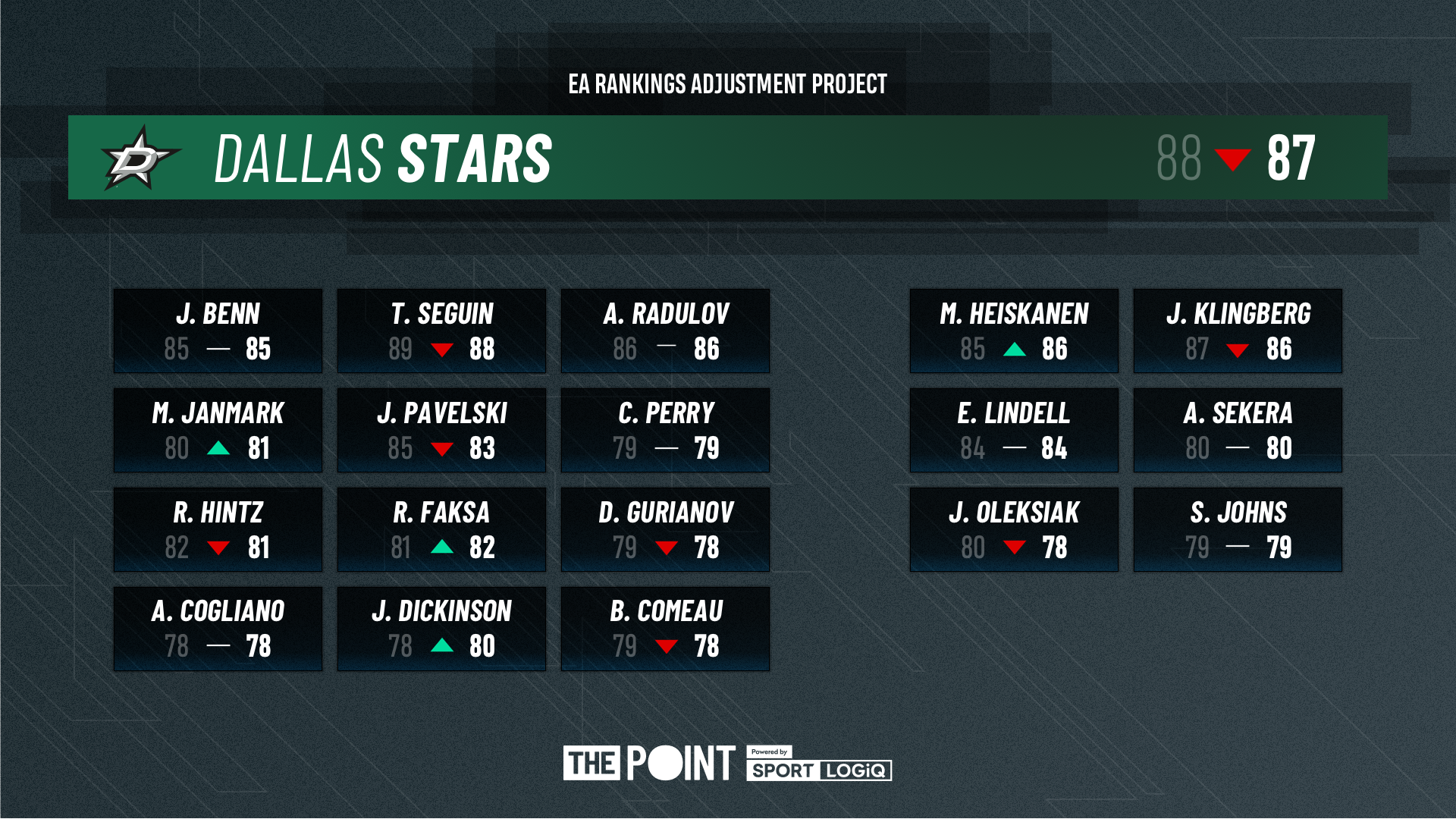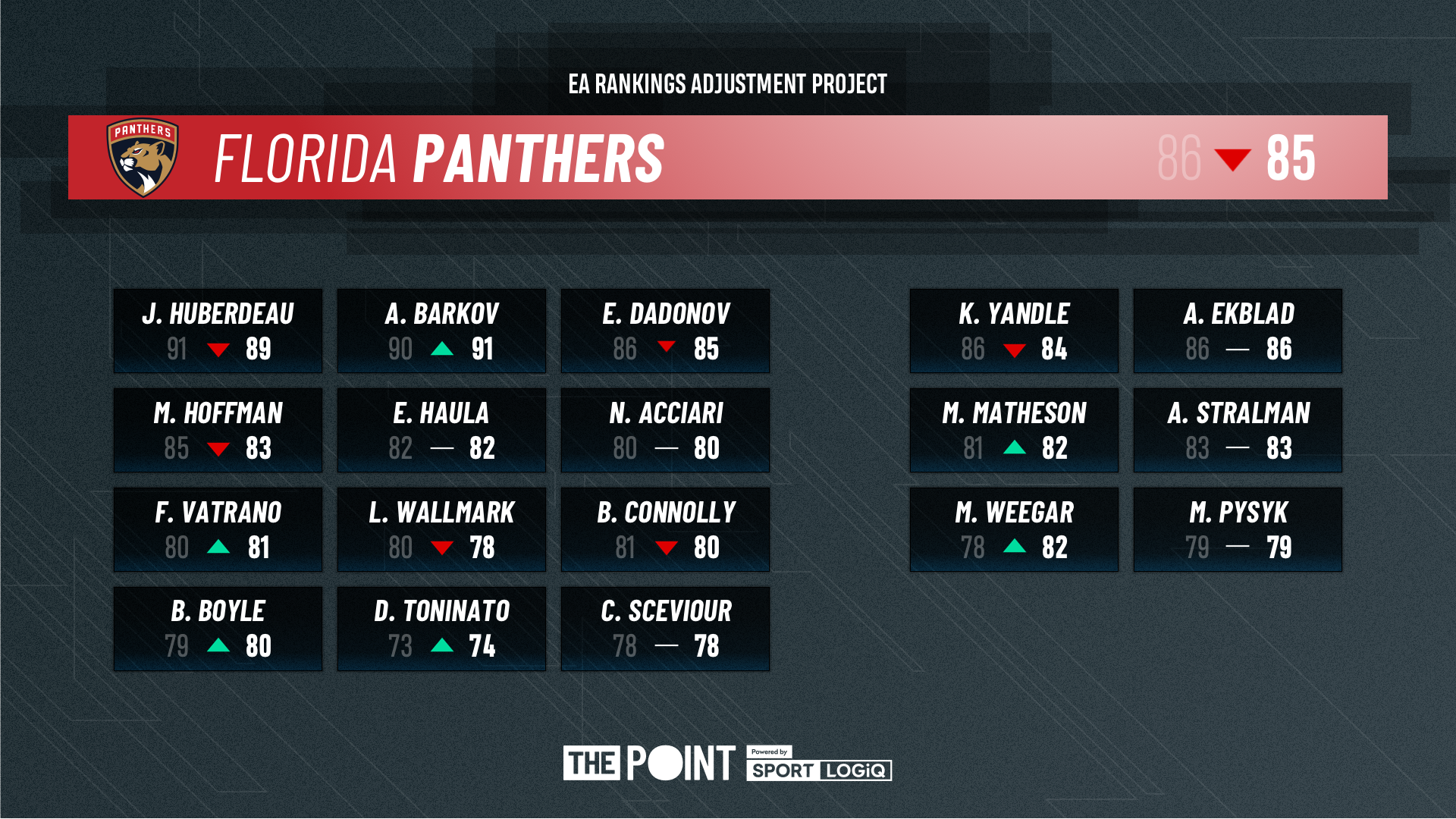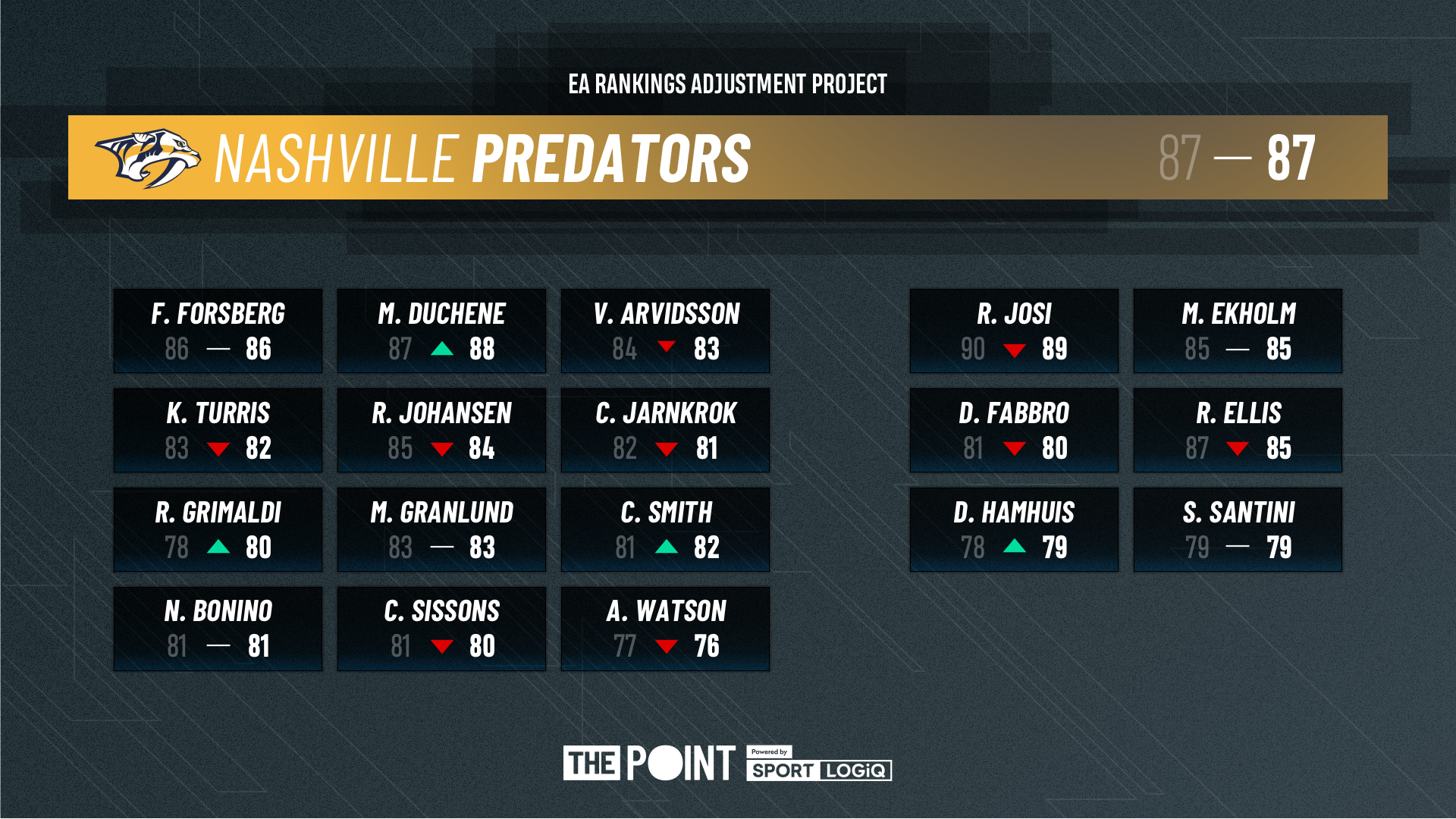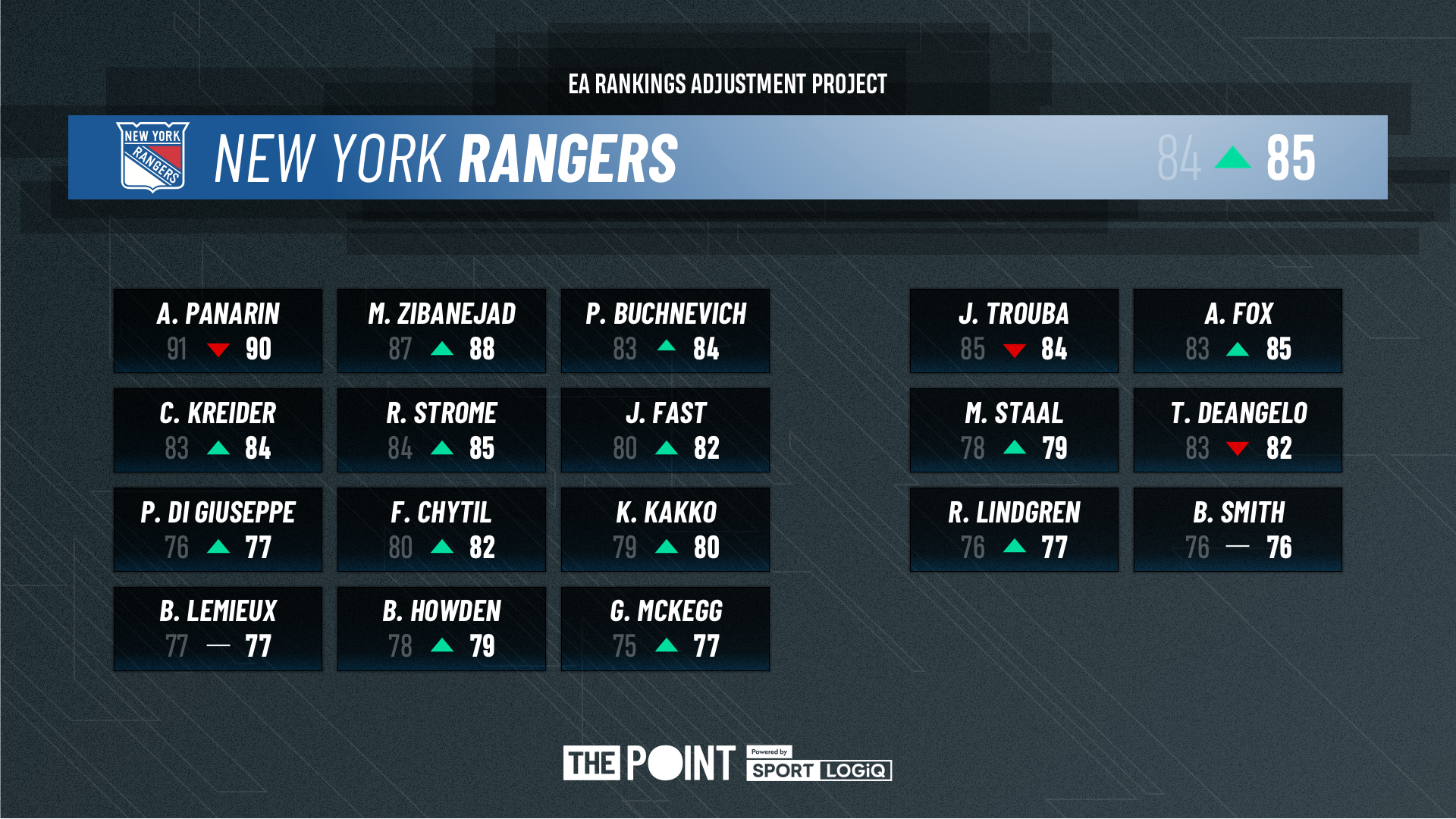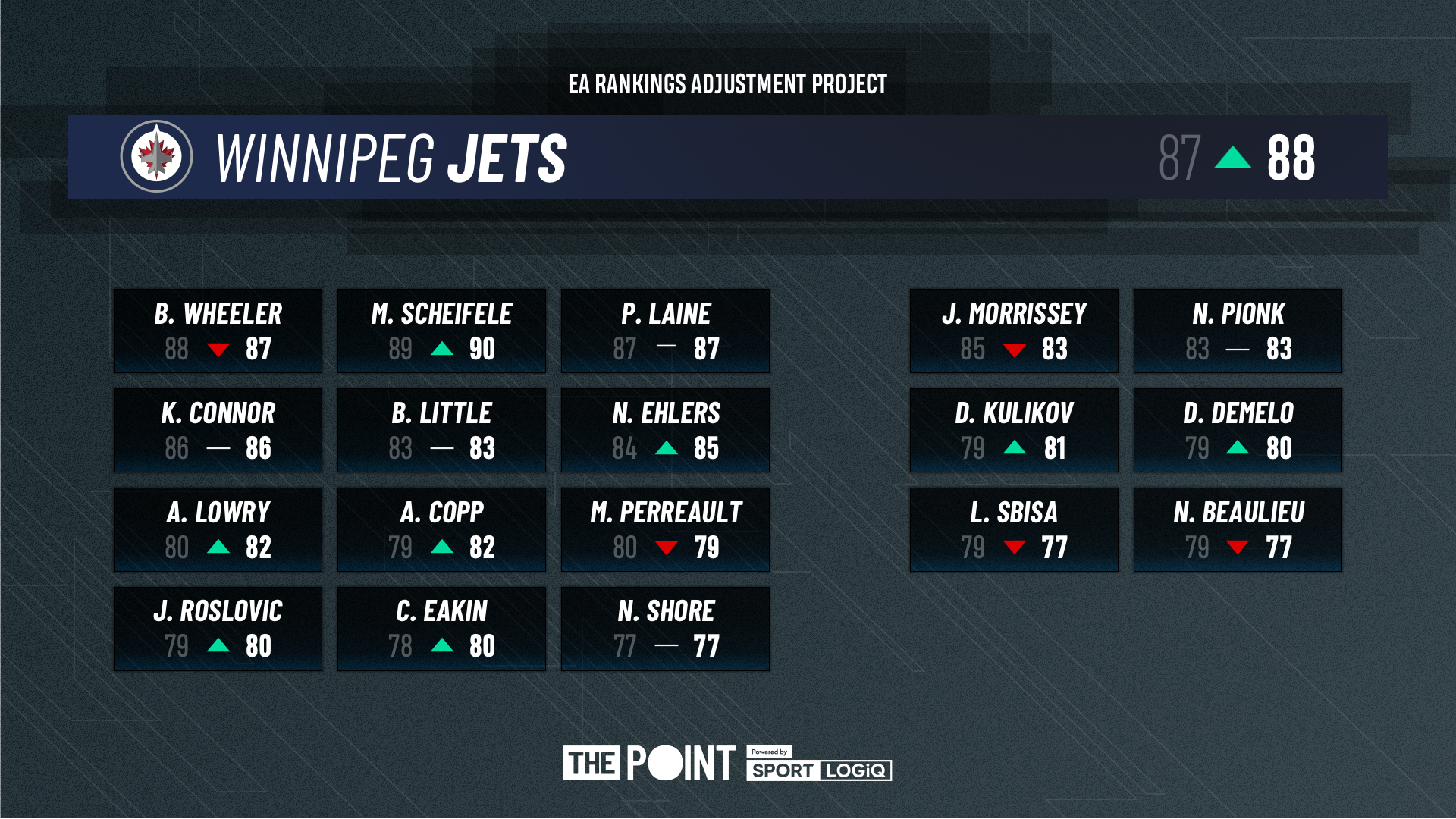With the hockey world going into lockdown in March, right as the playoffs were about to kick off, I turned to EA Sports NHL 20 for my hockey fix. Using Sportlogiq data, I decided to rework the overall system and assign new attributes to every NHL player based on their real-life performance. In Part 3 of this 5 part series, I will break down the results for skaters. Make sure to check out Part 1, where I detailed the method behind the madness, and Part 2, in which I break down the goaltender results.
Coming up with a new system for NHL skaters was by far the hardest part of this whole exercise. First, the number of players and the amount of data taken into consideration was massive. Second, it was harder to do multiple iterations since, with each attempt, I needed to input all this new data in NHL 20 by myself, as roster sharing isn’t yet implemented. Last, and by no means least, boiling every player’s talent to a single number is almost impossible.
There are so many different ways to be an effective hockey player. How can you grade a shutdown defenseman like Niklas Hjalmarsson and a pure sniper like Alex Ovechkin on the same scale?
At first, I attempted to include as many attributes as I could in my rework. However, I quickly realized that a few stats made this a near-impossible task: Offensive and Defensive Awareness. These two numbers have a huge impact on the final overall and thus, nearly every elite player has a high rating in both. They are also very vague categories that are tough to quantify and the definition changes from player to player. Anders Lee setting up in front of the net is a smart play, but if Johnny Gaudreau did the same, it would be a waste of his abilities.
Let’s take Ovi as an example. Now, I don’t think anybody would claim Ovechkin is a defensive ace. Yet, his defensive awareness stands at a very good 87. That’s just one point lower than Phillip Danault, who has established himself as one of the best defensive centers in the game over the past couple of seasons. Danault even had some Selke recognition in 2018-19, finishing 7th in voting, including one vote for first place.
In one of my first iterations, Ovechkin’s defensive awareness graded out at 78. Now, I don’t think that’s too bad of an evaluation for the Russian’s defense. The problem comes with how that attribute translates in-game. Ovi starts out as a 92 in EA’s latest roster update. If I simply drop his defensive awareness by 9 points, he falls all the way down to an 89. If I include that same change with the other adjustments I made, he drops down to 86.
This issue continued to pop up for pretty much every high-rated player. It would turn a lot of elite offensive talents with average defense into good but not great overalls, and inversely could make some role players jump way up in rating. Matt Grzezlcyk became an 85 in one of the early iterations, for example, and was nearly as good as Torey Krug, if not higher rated. This in turn led to some wonky lineups when the CPU would go “Best Lines”.
So I decided to scale down the edits and try to find a balance between overalls that pass the eye test and adjustments that reflect real-life performance. This way, there would be no chance of superstars being slotted on the 2nd or 3rd line due to poor defense. Here are the attributes I decided to tweak in the end and what I took into consideration for each.
Speed: While the NHL’s chip tracking system isn’t implemented yet, I judged speed by how fast a player could play rather than pure straight-line speed. So I included things such as rush chances, end-to-end rushes, etc… The results aren’t perfect, but until we get the actual speed of every player, this is as close as I could get.
Body Checking: I took some creative liberties with this one and decided to go with effective hits, or hits that separate a player from the puck, rather than the pure hits stats as the NHL tracks it.
Puck Control: Here I included things such as puck on stick time, the ability to maintain the puck through stick check attempts, and the amount of touches a player gets.
Passing: Passing is an obvious one, but it ended up being the category with the most data points taken into consideration, as Sportlogiq tracks a very large amount of different pass types. They were also weighed pretty differently per position, with defenders getting a bigger boost from stretch and outlet passes while forwards had more weight placed on passes to the slots or for one-timers. I also added assists, to boost the top playmakers in the NHL.
Strength: Since I can’t ask all NHL players to put up as many bench press reps as possible, I graded strength on their ability to win puck battles and maintain the puck through contact.
Faceoff: This was another very straightforward category, although i did add some extra weight for players who excel in defensive faceoffs.
Hand-Eye: I stayed simple on this one and went with a player’s ability to deflect pucks. This is probably one of the stats that hurt superstars the most, as they don’t necessarily park themselves in front of the net.
Shot Blocking and Stick Checking: Nothing really crazy here, both are as simple as it gets.
Discipline: Once again went pretty simple here and took the number of penalties taken per 20 minutes of play. Discipline barely affects a player’s overall but it will be interesting to see how impactful it is in simulation.
If you want to know more about the process I used, check out Part 1 here, where I go in more detail as to how I determined the new attributes. I left out the non-playoff teams from the exercise as a time-saving measure since they won’t have any impact on the playoff sim coming up in Part 4. You can still access the reworked attributes of non-playoff teams in the spreadsheet linked at the end of this article, although the overalls are not included.
THE RESULTS
Here are the new overalls for the 24 playoff-bound teams:
Lines and pairs were determined by the game’s “Best Lines” system to be even for every team. A few players got called up from the AHL when relevant and others, such as Dustin Byfuglien and Brendan Leipsic, were removed for obvious reasons. I also Left Mark Pysyk and Brendan Smith untouched, as both played mostly forward this year, but the game still classifies them as defensemen, so their numbers would be heavily skewed by that.
Like in the goalie adjustment, which you can find here, I want to stress the fact that the final overall number was out of my hands. I controlled the attributes, but EA’s algorithm made the decisions as to which ones impacted the final number the most. 2019-20 was also the only season of data to be taken into consideration.
High overall players took a hit around the league. In the default roster, nearly every superstar has above average to great defensive attributes to help take them to a final number that fits their real-life impact. My edits took their defense down to reflect their contributions this season and cost them a few points.
Cale Makar is a good example. The Avs defenseman was having an outstanding rookie season with 50 points in 57 games but the reworked attributes dropped him one overall point. However, this does not do justice to the changes I made.
Yes, his Stick Checking, Shot Blocking, and Body Checking ratings dropped 4, 7, and 7 points respectively, but his offensive statistics are now through the roof. He received a +4 Speed (now 97) and Passing (93) as well as a +6 to Puck Control (94). In my opinion, this makes him a much more dangerous defenseman and reflects his actual playstyle pretty well.
As I mentioned earlier, Alex Ovechkin is another player that took a nosedive in rating, dropping 4 points from 92 to 88. The issue is that Ovechkin was already highly rated in nearly all attributes, so anything that he still graded out as elite didn’t rise that much, while areas he graded out as more average, like Stick Checking or Passing, took a big fall and hurt the final number. He did jump from 88 to 94 Speed and kept his Body Checking rating in the 90s, so he will likely be just as dangerous and fun to use, if not more.
And if you’re a full-on data nerd like me…
…Here are the full spreadsheets of the edits done in this new roster.
Like I mentioned earlier, I did not input non-playoff teams’ data in NHL 20 as a time-saving measure but their new attributes are still there if you wish to use them, the only thing missing is the change in overall they cause. If you want to help me fill it out, feel free to reach out to me on Twitter @BillypBertrand.
Make sure to stay tuned for Parts 4 and 5 of this series. Up next is a playoff simulation in NHL 20 with the new overalls and using the new return to play format on Tuesday. Then, to finish everything up, I will outline a few suggestions on how I believe the overall system could be tweaked and improved in future games.




